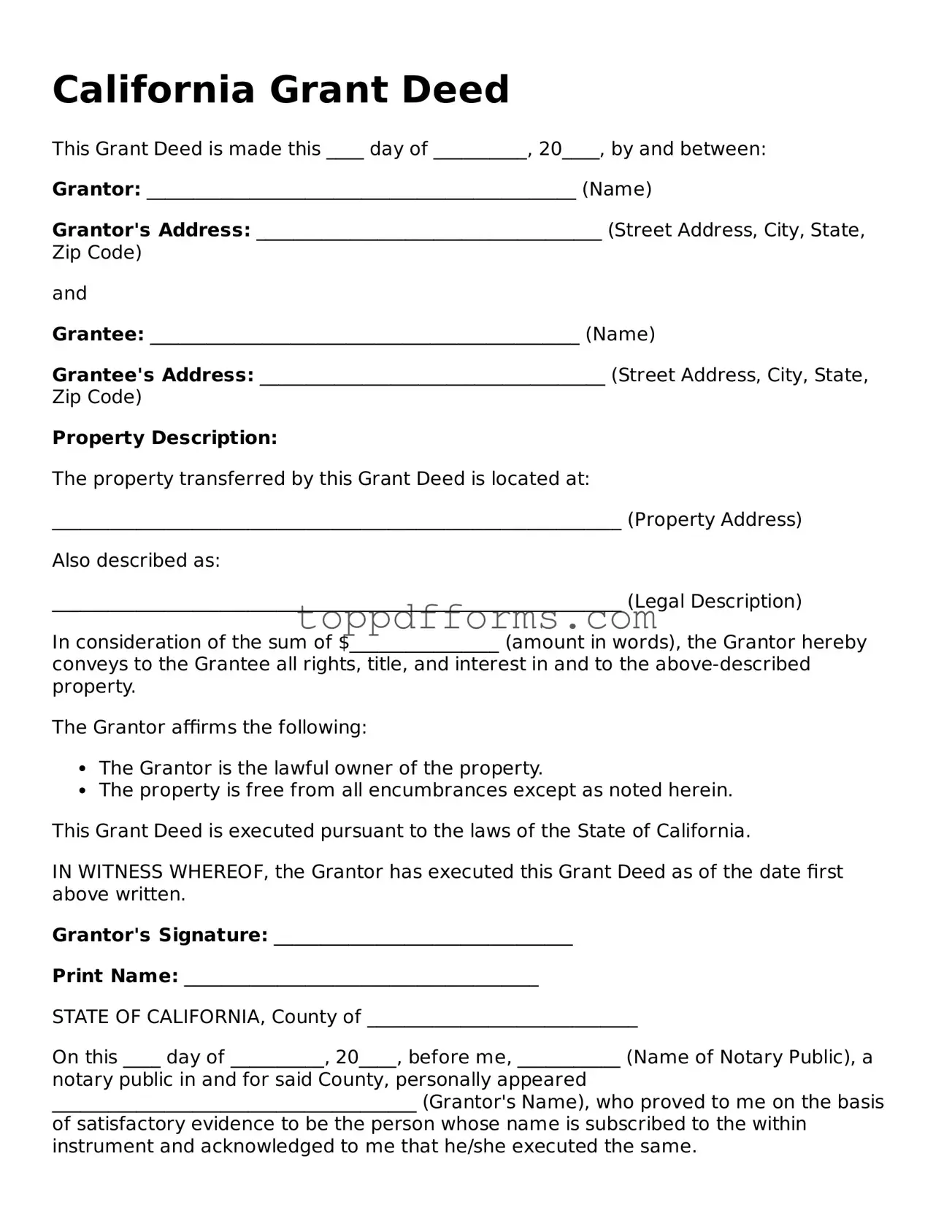Filling out a California Deed form can be a straightforward process, but many people encounter pitfalls that can lead to complications down the line. One common mistake is not including the correct legal description of the property. This description is essential; it identifies the exact boundaries of the property. If this information is inaccurate or incomplete, it can cause confusion and disputes in the future.
Another frequent error is failing to sign the deed. While it may seem obvious, many overlook the importance of a signature. Without it, the deed is considered invalid. Additionally, the signature must be notarized. Notaries ensure that the person signing the document is who they claim to be, which adds an extra layer of protection.
People often forget to check the names of the parties involved. If the names on the deed do not match those on the title or other legal documents, it can create issues. It's crucial to ensure that all names are spelled correctly and that the right individuals are listed as grantors and grantees.
Another mistake is neglecting to include the date of the transaction. While it may seem minor, the date is vital for establishing the timeline of ownership. Omitting it can lead to confusion regarding when the transfer took place, potentially affecting tax implications or legal rights.
Not considering the implications of property ownership can also lead to mistakes. For instance, if multiple people are involved, it’s essential to specify how they will hold the title. Whether as joint tenants or tenants in common, the choice affects how the property will be handled in the event of a death or dispute.
Some individuals overlook the need for a preliminary change of ownership report. In California, this report must accompany the deed when it is recorded. Failing to submit this report can result in penalties or delays in processing the deed.
Another common oversight is not filing the deed promptly. After signing and notarizing, the deed should be filed with the county recorder’s office as soon as possible. Delays can lead to complications, especially if there are disputes over ownership.
Finally, many people underestimate the importance of seeking legal advice. While filling out the deed may seem simple, having an expert review the document can help avoid mistakes that could lead to costly problems in the future. A little guidance can go a long way in ensuring that everything is in order.
